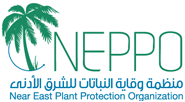The last country where the Tomato brown rugose fruit virus (ToBRFV) has been detected is Spain. Rafael Sánchez Trujillo, head of the Plant Health Service of the Government of Andalusia, has spoken about the detection of the virus in a greenhouse in Almeria during the Semilla Innova congress, which has been held in Almería, as reported by local news source joseantonioarcos.es. The Government of Andalusia cannot yet confirm the detection, as it is waiting for Brussels’ response after providing a report about the virus’ progress to the European Commission. Since this virus has a quarantine status, it is mandatory to report it to the EU.
For now, the Almeria greenhouse is isolated and all contaminated plantations have been treated according to the protocols established for this situation. “All the risks have been minimized to ensure that neighboring farms are protected,” says Rafael, comparing the handling of the situation with that of the Xylella fastidiosa outbreak a few years ago, which was eradicated.
Innocuous for humans and animals
The virus is harmless to humans and animals, but can cause serious damage to crops. In addition, it is very contagious and can be transmitted easily. Since it was first identified, the virus has been detected in Germany, California, Mexico, Italy, Greece, China, Israel, Jordan and the United Kingdom.
It is also spreading in the Netherlands. In total, it has been detected in 10 greenhouses: 6 in the Westland region and 4 outside it. In addition, there are serious suspicions of the presence of this virus in another 7 greenhouses.
Although there is no official confirmation from government agencies, it is also claimed that there are contaminated greenhouses in the United States and Canada, although strict hygiene measures have helped producers eradicate the virus.
Hygiene
Since there is no vaccine or resistant varieties to fight ToBRFV, the virus has to be eradicated by thorough cleaning of greenhouses. “Biosecurity is our main defense and prevention is key.” This is the general thinking and the reason that many greenhouses are currently closed to visitors.
Since many Spanish producers cultivate in the soil, the virus is expected to be very dangerous for the country. A similar situation has occurred in Italy, where it is said that the virus won’t stop spreading.
ToBRFV belongs to the group of tobamoviruses, formed by about 30 variants. The crops most affected by ToBRFV are tomatoes and peppers. In tomatoes, it causes chlorosis, mosaic and mottling with narrowing of the leaves. Occasionally, necrotic spots appear on the stem, chalice and leaf stalks. Yellow or brown spots can appear on the fruits, as well as a roughness that makes it impossible to put them on the market. The fruits can also suffer malformations and irregularities in the ripening.
Publication date: Mon 2 Dec 2019
https://www.freshplaza.com/article/9168299/tomato-brown-rugose-fruit-virus-detected-in-spain/
Other relevant documents:
cbp-to-begin-inspections-for-tomato-brown-rugose-fruit-virus



